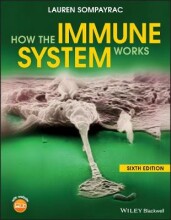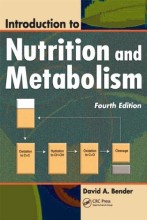Try our study magic for free
Summary: Pien's Aantekeningen
- This + 400k other summaries
- A unique study and practice tool
- Never study anything twice again
- Get the grades you hope for
- 100% sure, 100% understanding
Remember faster, study better. Scientifically proven.
a PDF, study it super fast
- No sign up, email or credit card needed!
- AI makes unlimited flashcards
- Get unlimited quizzes and tests
- Ask AI anything
Create a notebook
- No sign up, email or credit card needed!
- Have and keep perfect overview
- Make flashcards, notes and mind maps
- Review, test and score!
Read the summary and the most important questions on Pien's aantekeningen
-
1 Nutrition and Sports
-
1.1 1. Energy metabolism
This is a preview. There are 21 more flashcards available for chapter 1.1
Show more cards here -
For very high force contractions lasting 1-2 seconds, the initial energy source is from:a. Glycolysisb. Creatine phosphorylationc. ATP storesd. None of the above
C. ATP stores -
After what period of time does maximal dynamic exercise become predominantly aerobic?a. 10 secb. 30 secc. 4 mind. 10 min
C. 4 min -
What are the 3 energy systems for ATP resynthesis?
- Phosphocreatine (PCr):
- rate: 4.4 mol/min
- delay: instantaneous
- capacity: 0.67 mol
- Anaerobic glycolysis:
- rate: 2.3
- delay: 5-10 sec
- capacity: 1.6 (6.7) mol
- Oxidative metabolism:
- Glycogen:
- rate: 1.0 mol/min
- delay: minutes
- 84 mol
- Blood-borne glucose
- rate: 0.34
- delay: ~90 min
- capacity: 19
- Lipids
- rate: 0.40
- delay: >2 hr
- capacity: 4000 mol
- Phosphocreatine (PCr):
-
If you have the anaerobic metabolism, which 2 systems are at work then?
- phosphagen system:- ATP
- phosphocreatine breakdown
tem
-
How does the phosphocreatine (PCr) breakdown work?
- Activation:
- decrease ratio ATP/ADP because of ATP bre
akdown
- Inhibition:
- increase ratio ATP/ADP due to increased aerobic ATP production of decreased ATP utilization
- Activation:
-
The complete resynthesis of PCr after very high intensity exercise normally takes:a. 10 secb. 30 secc. 1 mind. 4 mine. More than 10 min
D. 4 min -
PCr resynthesis during recovery from exercise is inhibited by:a. An excess of creatineb. Hyperventilationc. An excess of oxygend. A lack of oxygene. Submaximal muscle contractions
D. A lack ofoxygen
So, oxygen is needed for resynthesis! -
The average intensity of exercise (%VO2max) for an elite middle distance runner during a 1500 m race will be about..a. 80%b. 100%c. 120%d. 200%e. 300%
C. 120% -
The net production of ATP by substrate level phosphorylation in glycolysis isa. 2 from blood glucose and 3 from glycogenb. 2 from blood glucose and4 from glycogenc. 3 from blood glucose and 4 from glycocen
a. 2 from blood glucose and 3 from glycogen
-
Musle and liver glycogen stores in a well nourished athlete would be sufficient to sustain approx how many minutes of submaximal exercise (if this were the only energy source used)? The exercise is clublevel marathon pace.a. 30 minb. 90 minc. 120 mind. 180 mine. 300 min
B and C
Read the full summary
This summary +380.000 other summaries A unique study tool A rehearsal system for this summary Studycoaching with videos
- Higher grades + faster learning
- Never study anything twice
- 100% sure, 100% understanding
Topics related to Summary: Pien's Aantekeningen
-
Thermoregulation and hydration
-
Micronutrients: Minerals
-
Antioxidants: Vitamins
-
Supplements and ergogenic aids
-
Exercise in medicine / injury and nutrition
-
Immune function / overtraining
-
Nutrition and Cancer - Hallmarks of cancer
-
Nutrition and Cancer - Pathology
-
Nutrition and Cancer - (Epi)genomics and cancer
-
Nutrition and Cancer - Hot red and processed meat
-
Nutrition and Cancer - Diet-gene interactions
-
Nutrition and Cancer - Nutrition and cancer prevention
-
Nutrition and Cancer - Physical activity
-
Nutrition and Cancer - Cancer screening
-
Nutrition and Cancer - Cancer treatment
-
Nutrition and Cancer - Hot : dietary supplements
-
Nutrition and Cancer - Nutrition and cancer survival
-
Nutrition and Cancer - Dietetics and cancer
-
Nutrition and Cancer - Sarcopenia and cachexia
-
Nutrition and Cancer - Cardiovascular Ageing: epidemiology
-
Nutritional Physiology
-
Psychobiology of Food Choice and Eating Behaviour - TOX kinetics
-
Psychobiology of Food Choice and Eating Behaviour - TOX testing
-
Psychobiology of Food Choice and Eating Behaviour - Psychological signals of satiety
-
Psychobiology of Food Choice and Eating Behaviour - Sensory specific satiety
-
Psychobiology of Food Choice and Eating Behaviour - Emotions, food choice and eating behaviour
-
Psychobiology of Food Choice and Eating Behaviour - Learning and sensory influences on eating behaviour
-
Psychobiology of Food Choice and Eating Behaviour - Memory, food choice and eating behaviour
-
Psychobiology of Food Choice and Eating Behaviour - Food reward and hedonic eating
-
Psychobiology of Food Choice and Eating Behaviour - Role of contect in food choice
-
Psychobiology of Food Choice and Eating Behaviour - Food choice across the life span





























